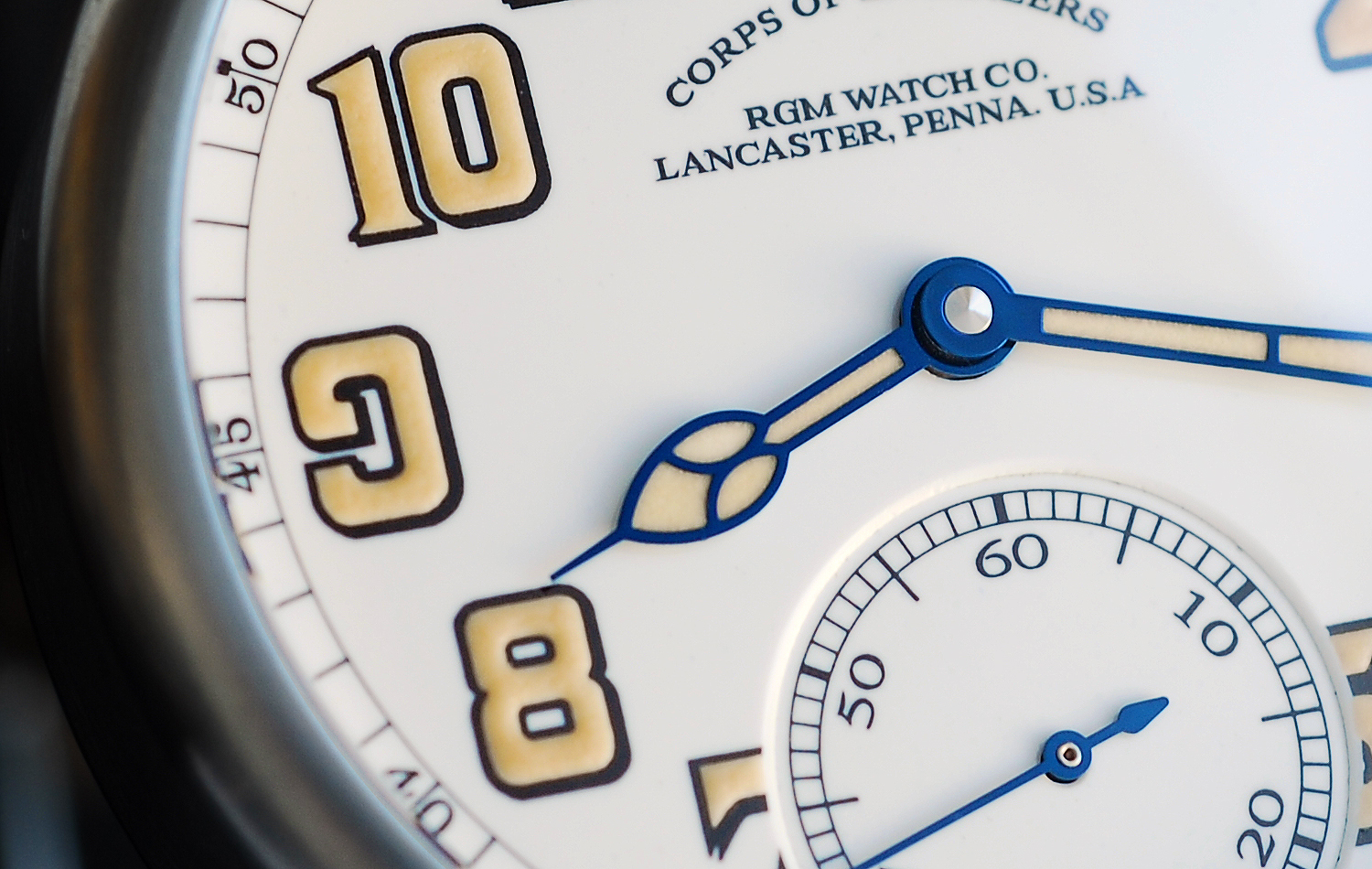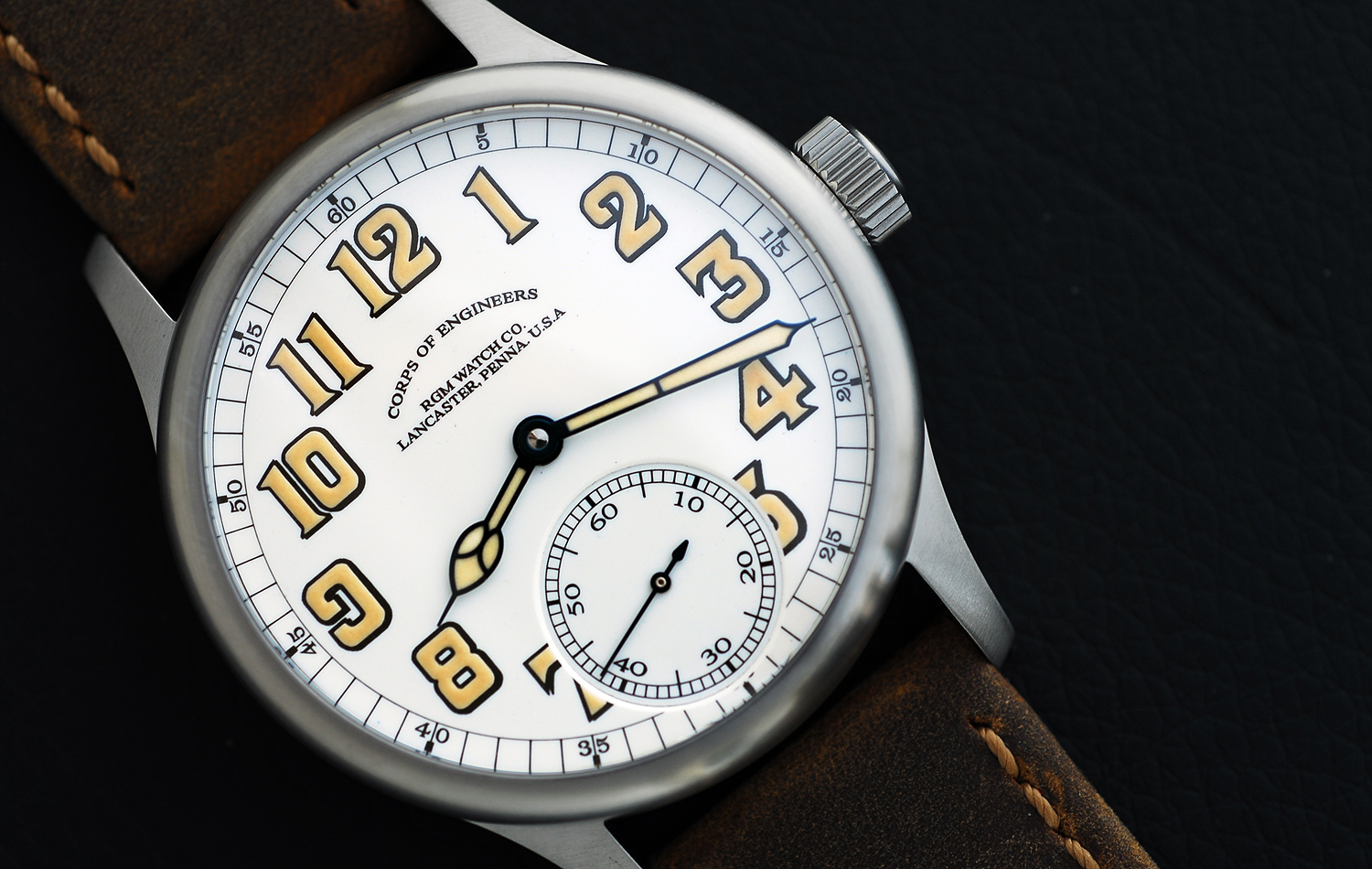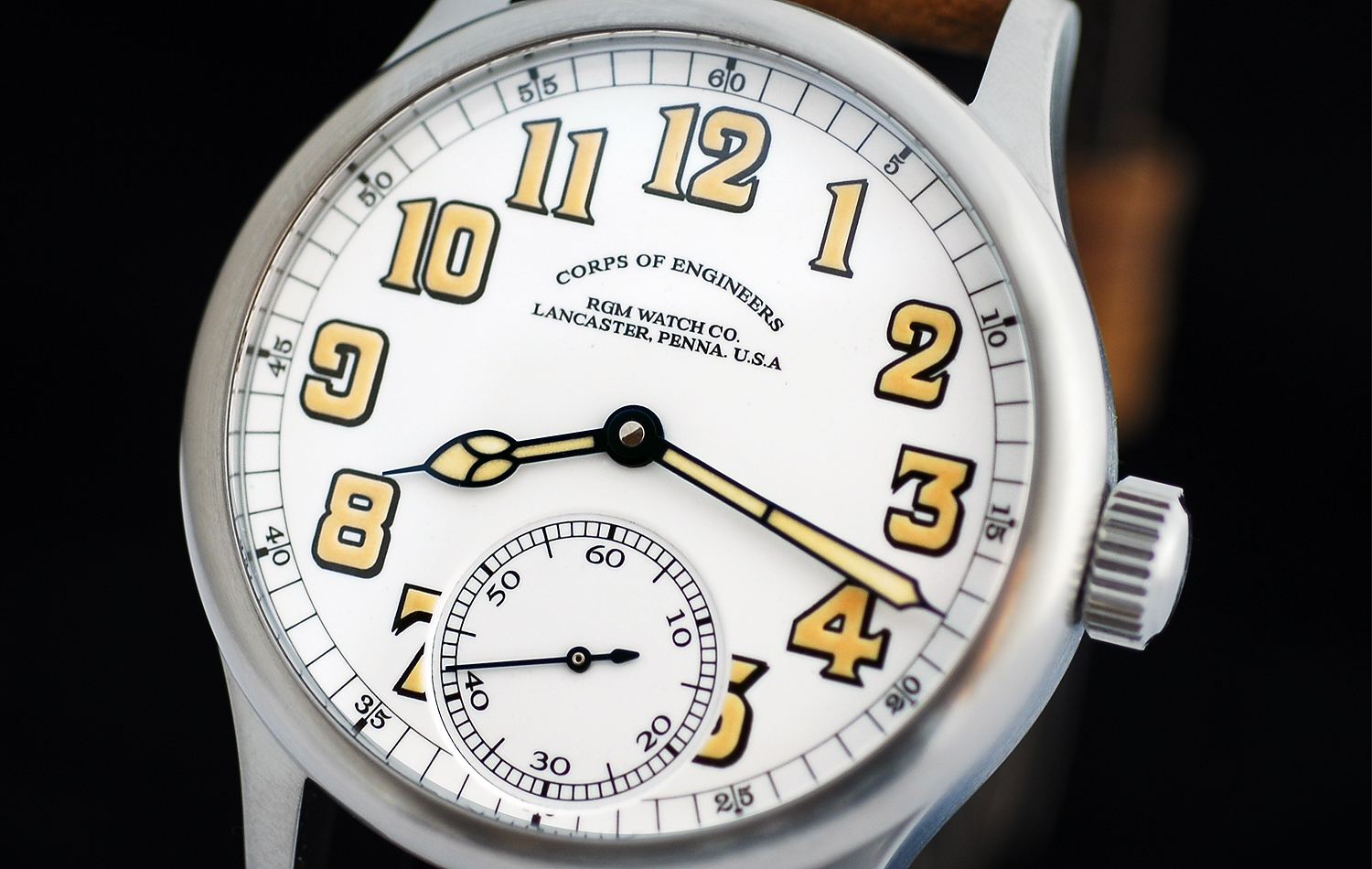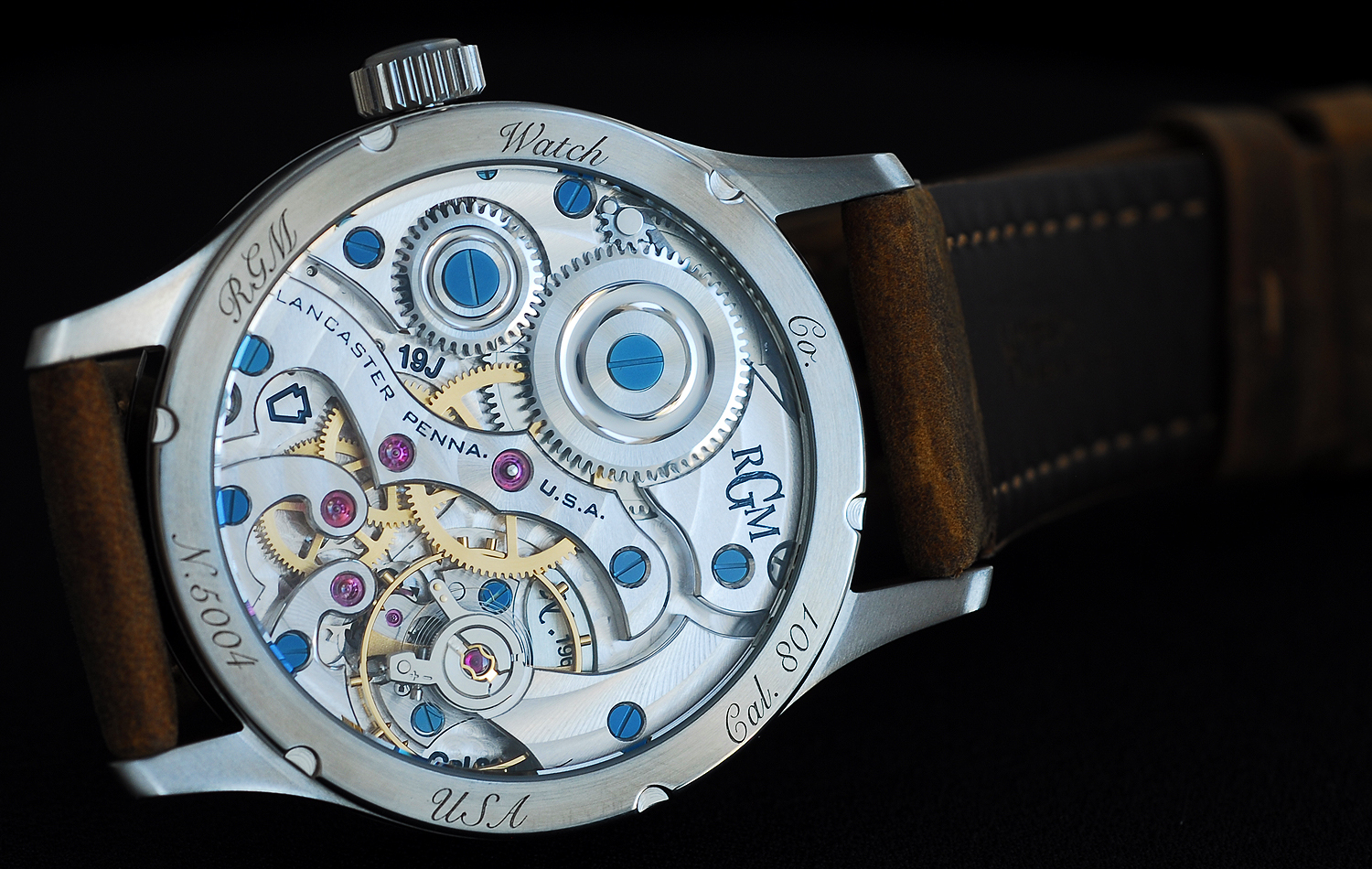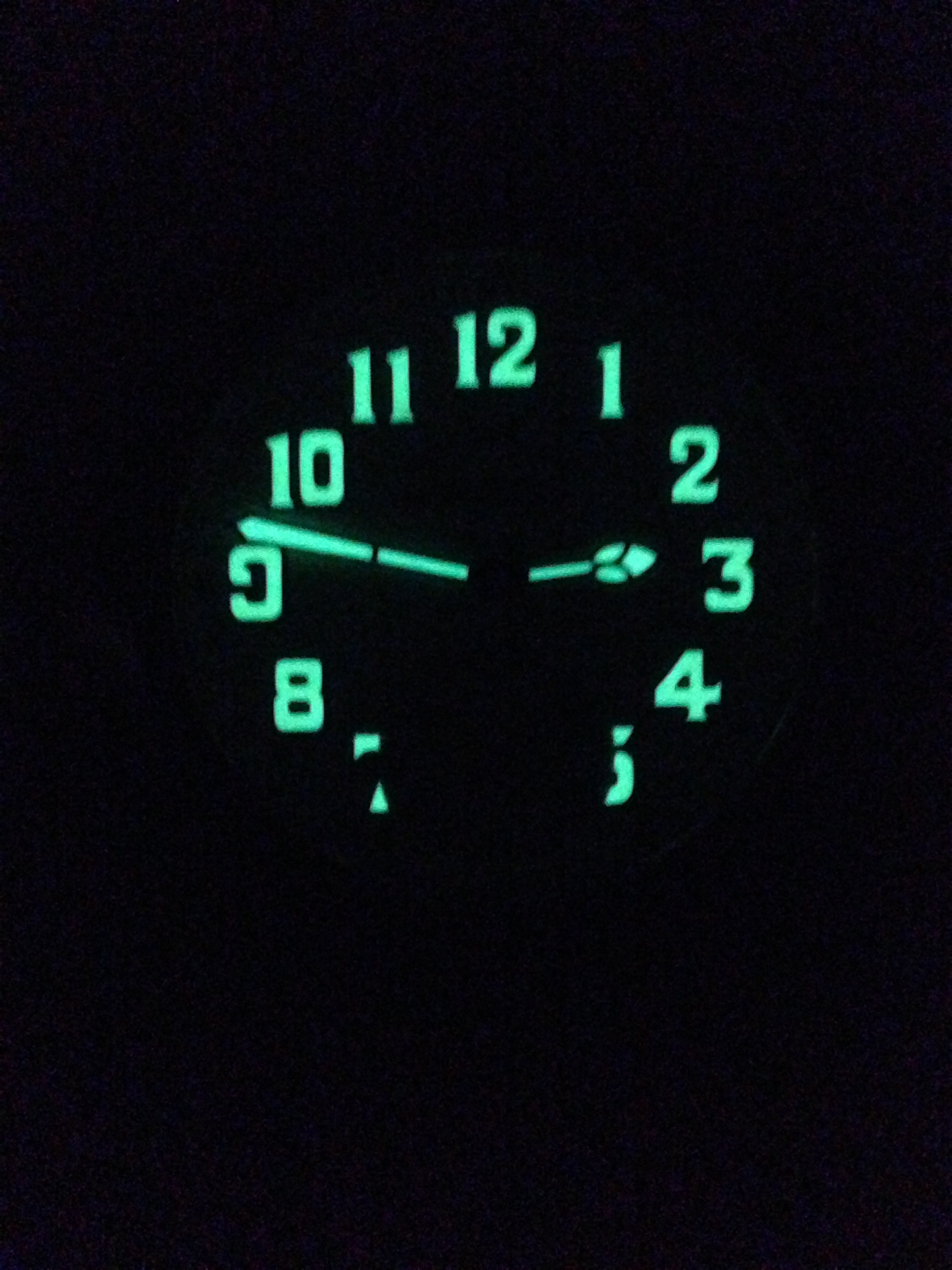801-COE "Corps of Engineers", and 801SW-COE
Inspired by the US Corps of Engineers watches from WWI, with a real glass fired enamel dial and blued steel hands. See more information below.
Behind the dial is our American 801 movement. Like many things that we do at RGM, the 801 is inspired by America's great watchmaking past. The bridges are reminiscent of the Keystone Howard Watch Company's "Edward Howard" model, their flagship watch, and one of the high-grade watches of its time. The unique winding click is inspired by the Illinois Watch Company's "Illini" model and the deep polished winding wheels are finished like those of the Illinois "Bunn Special". Like the great Railroad watches from America's past, the 801 has a high-grade finish that denotes the quality of its construction.
Dial: Glass Enamel, Grand Feu (“Great Fire”)
Movement Caliber: In-House RGM Caliber 801, Manual wind, 19 jewels, 18,000 vph. Rhodium or Gold, Hand finished - Cote de Geneve, perlage. Unique 5-tooth winding click. Optional wolf's tooth winding wheels. 90% made in the USA.
Functions: Hour / Minute / Second
Case: Brushed 316L Stainless Steel. 42.0 mm X 10.5 mm. Sapphire crystal front and back, 22mm lug width, and water-resistant to 5-ATM. Case length from lug end to lug end 52mm.
Weight: 2.5 oz. (with Stainless Steel Bracelet: 6.4 oz)
SCROLL DOWN TO SEE ALL 801-COE IMAGES
801SW-COE "Corps of Engineers" Sweep Second
Movement Caliber: In-House RGM Caliber 801-SW, Sweep Second (center second) Manual wind, 19 jewels, 18,000 vph. Rhodium or Gold, Hand finished - Cote de Geneve, perlage. Unique 5 tooth winding click. Optional wolf's tooth winding wheels. 90% made in the USA.
Functions: Hour / Minute / Hacking Sweep Second
Case: Brushed 316L Stainless Steel. 42.0 mm X 11.7 mm. Sapphire crystal front and back, 22mm lug width and water-resistant to 5-ATM.
Weight: 3.1 oz. (with Stainless Steel Bracelet : 7 oz)
SCROLL DOWN TO SEE ALL 801SW-COE IMAGES
When the United States joined “The Great War” in April 1917, British and French governments made the arrival of American engineers their top priority. By the end of August 1917, nine newly organized engineer railway regiments, recruited largely from the nation’s private railway workers, had arrived in France. Since the U.S. Army Corps of Engineers had adopted the General Railroad Timepiece Standards of 1893, they brought with them about 1,000 American-made Hamilton railroad watches that met those standards. Each watch incorporated several technical features to ensure easy winding, legibility and accuracy to within 30 seconds a week. In an effort to reduce reliance on trans-Atlantic shipping routes, the AEF Quartermaster Corps chose to procure more watches from within Europe, ordering from several Swiss companies.
The original Corps of Engineer watches had real glass enamel dials, widely used in the watch industry at the time, though rare in modern watches. Since the beauty and depth of a real glass enamel dial cannot be simulated, the only way to achieve this classic look was to produce it in the same way. So the dial was designed and a master of the Grand Feu (French for “Great Fire”) technique was commissioned to make the enamel dials. Creating an enamel watch dial is a high-risk art. Enameling is a technique in which colored powdered glass is applied to a metal plate. The surface is then heated to a temperature high enough to cause the powdered glass to melt and form a new surface. The Grand Feu technique ups the stakes. The repeated baking of successive layers of enamel at extremely high temperatures ensures a uniquely crisp aesthetic while permanently setting the enamel. Using such high heat to create these beautiful dials also poses a risk: each time it is re-fired, the danger of cracking, melting or burning increases. With great risk comes great reward - the appearance of a real glass enamel dial is unmistakable.
Similar to the original from which RGM drew its inspiration, the dial on the Corps of Engineers 801 is a work of art. The General Railroad Timepiece Standards of 1893 required that the watches have bold black Arabic numerals on a white dial with dark hands. RGM’s model features an easily readable deep white glass enamel dial with large luminous numbers. The hands are also classically made of blued steel in a period style that perfectly match the dial and design of the complete watch. The luminous material on the dial and hands is non-radioactive Super-LumiNova.
Under this extraordinary dial and hands is RGM’s original in-house American movement: Caliber 801. Inspired by America’s great watchmaking history, the 801 has classic bridge shapes, hand polished or blued steel components, and is entirely hand-finished and decorated. The movement can also be customized at the client’s request.
The watch is housed in a 316L stainless steel brushed pilot-style case.


